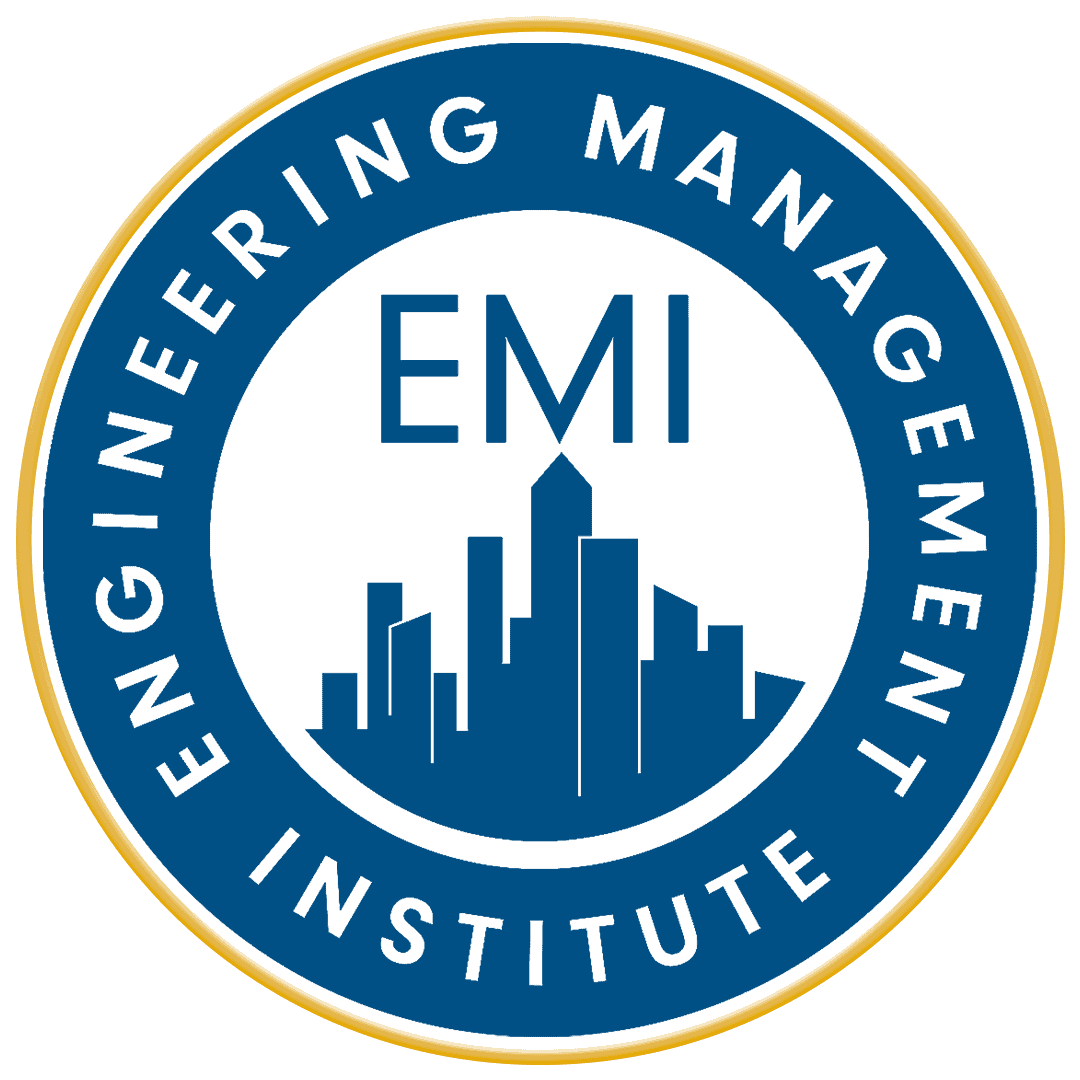3RD ANNUAL-2023
PRESENT AND FUTURE OF WORK IN ENGINEERING AND ARCHITECTURE
Our latest report on the state of the talent market, plus insights about how best-in-class organizations are coping with talent shortages, turnover, and disengagement.
New research from ActionsProve and the Engineering Management Institute uncovers what drives employee engagement, retention, and belonging at work.
A survey of over 400 engineers and architects in North America explores key workplace issues by age, gender, role and years of experience. Its findings show how employers can attract and retain top talent amidst the Great Resignation, and position themselves for greater growth and prosperity.
AN INDUSTRY EXPERIENCING GROWING PAINS
Research shows the engineering and architecture industry is growing-even in the face of a potential economic recession. Yet structural problems in hiring and motivating employees exacerbate the talent shortage.
DOWNLOAD THE REPORTMany analysts and research groups expect uneven growth for the industry in 2023. Spending on residential construction is predicted to decline 2% in 2023, while spending on nonresidential building and nonbuilding structures is projected to rise 8% this year, according to FMI’s first quarter 2023 report.1 The US economy is expected to grow 3.1% this year, according to figures from the US Congressional Budget Office.2 Our research shows engineers and architects are optimistic about their company’s growth prospects; more than three in four expect their company’s revenue will grow in 2023. Yet talent shortages inhibit growth for many organizations. Among industry leaders we surveyed, 96% say shortages will restrain their company’s growth in the coming year. An analysis from McKinsey underlines this point: Spending increases related to the Infrastructure Investment and Jobs Act (IIJA) will cause a shortfall of 40,000 engineering and technical-services workers in 2027 and another 40,000 in 2028.
The problem: Though more students pursue engineering degrees, the increases cannot make up for the fast growing demand. The National Science Foundation reports that nearly 30% of all engineering and science graduates in the labor force are over 50 years old, meaning they will likely retire in the next 15 years.
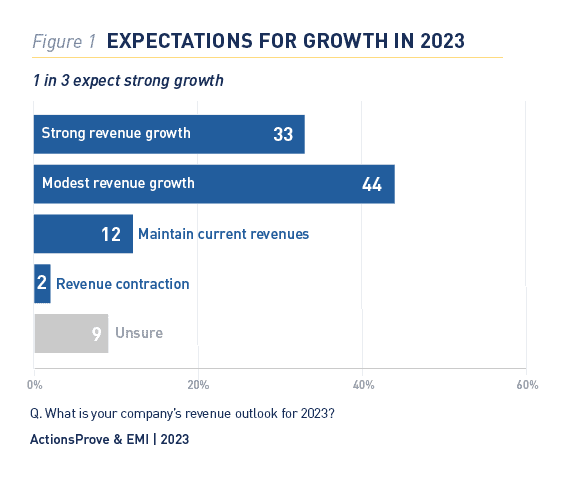
To make matters worse, companies still grapple with historically high turnover. More than half (55%) of engineers and architects say the Great Resignation still pervades the industry, and among younger employees and technical professionals, that percent is significantly higher. And 55% would consider leaving their current employer for a new opportunity (down 6 points from 2022 but still high). Given the dismal state of talent availability in the industry, alarm bells should sound.
>3 in 4
engineers and architects expect their company’s revenue will grow in 2023.
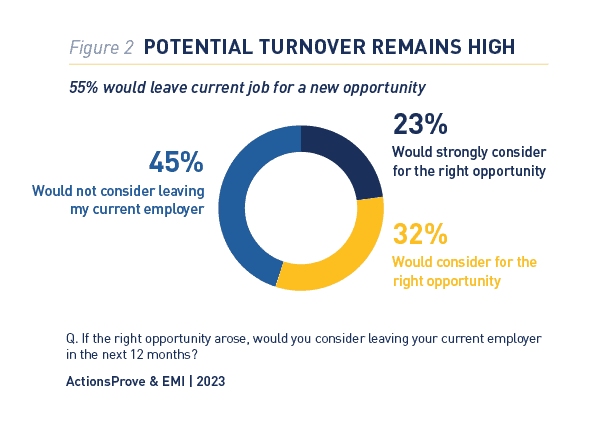
An industry paradox
If organizations are desperate for talent, why do so many struggle to retain talented individuals? And even more: Why is the reported quality of work life for in demand engineers and architects so low? Many assume professionals leave their employer in search of higher wages, but the answer is more nuanced. The most common reasons are a search for career advancement (53%), followed by a more competitive salary (40%). But nearly one in three say quality-of-life factors like stress and not feeling valued at work would drive them to resign. And one in four seek a more flexible schedule
 A large share of engineers and architects simply feel disconnected from their work: burned out, stressed, and unengaged. Here is just a handful of the troubling statistics:
A large share of engineers and architects simply feel disconnected from their work: burned out, stressed, and unengaged. Here is just a handful of the troubling statistics:• Low level of engagement:
Fewer than half (46%) of engineers and architects say they are highly engaged at work.5 Those engagement figures are higher than general findings from Gallup in November 2022-when 33% of US employees were engaged at work-but the results are still concerning, especially when we consider the highly attractive and unique nature of our work.6 For some roles and subparts of our industry, engagement levels are far worse. For example, in public-sector jobs, just 29% say they’re highly engaged with their work. And 37% of managers report the same (more on that to come).
• Few advancement opportunities:
Just 26% “strongly agree” they see a path for advancement at their company. (Remember, career advancement is the No. 1 driver of turnover.)
• Burnout and stress are common:
The majority of engineering and architecture professionals say they are stressed at work. Fifty-eight percent say the stress affects their physical and mental health, and 49% say it affects how they interact with family and friends. Leaders are aware of the negative impacts; 71% say stress and burnout restrain growth at their companies.
• Independent careers seen as escape from industry
challenges:
28% say they’re highly interested or actively pursuing an independent career-meaning they want to work independently as contract or freelance professionals. While slightly more than one in four is not an overwhelmingly large group, 50% of those with five to nine years’ experience are highly interested or currently pursuing independence. The option is attractive because they want greater control over their projects and hours.
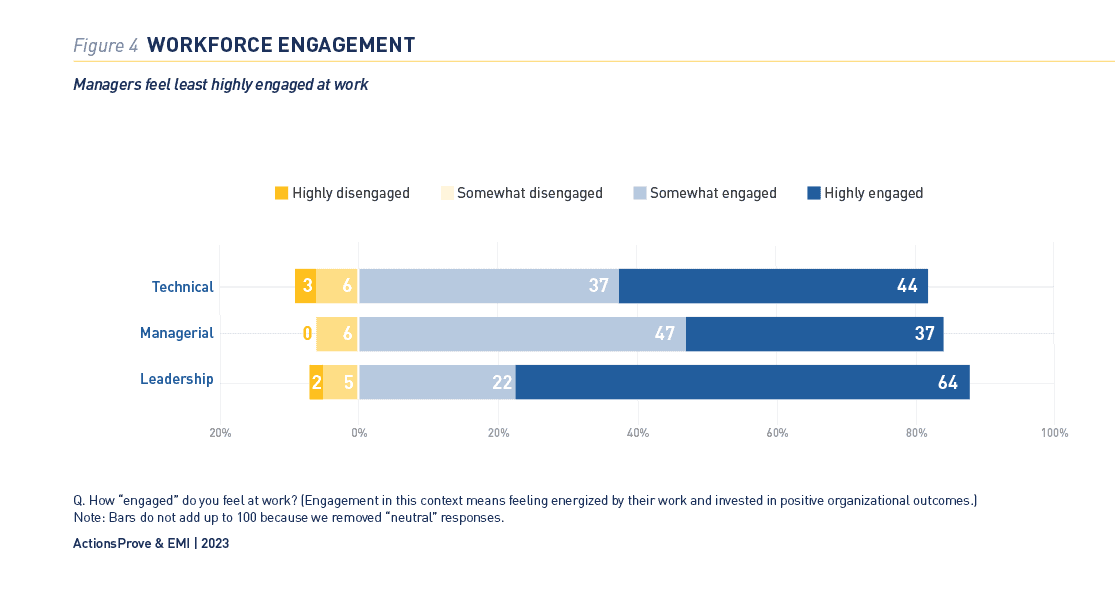
The evidence is overwhelming: Factors like stress, burnout, overworking, and work-life imbalance pull at the fabric of the engineering and architecture professions. “We can’t keep talking about a talent shortage without taking a serious look at why many firms have ongoing high turnover,” says Peter C. Atherton, P.E., president and founder of ActionsProve. “The work world has undergone a massive shift: Many professionals want greater flexibility to exercise more agency over their time and energy. So far, a sizable number of industry leaders still seem less willing to part with many of our most limiting traditional practices. Our 2023 research spells out the consequences from this type of real or perceived inflexibility.”
In February and March 2023, we surveyed 435 professionals in engineering and architecture to understand issues like professional satisfaction, engagement, training, workload, and many other factors. Aside from taking the pulse of individuals’ professional lives, we wanted to know how hiring companies cope with talent shortages, and how highly attractive firms compete for and retain top talent.
55%
of engineers and architects would consider leaving their
current employer for a new opportunity
DOWNLOAD THE REPORT TO LEARN MORE Authors
 Peter Atherton, P.E.
Peter Atherton, P.E.President and Founder of ActionsProve
Peter C. Atherton, P.E. is an accomplished AEC industry insider turned executive coach and consultant. Pete has over 30 years of experience, 24 as a successful professional civil engineer, project manager, principal, practice group leader, major owner, and member of the board of directors with high-achieving firms.
Pete is now the President and Founder of ActionsProve, LLC (www.actionsprove.com), author of Reversing Burnout. How to Immediately Engage Top Talent and Grow! A Blueprint for Professionals and Business Owners, and the creator of the I.M.P.A.C.T. process.
Pete is also the host of the AEC Leadership Today Podcast and the AEC Leadership Mastermind.
Pete works with AEC leaders and firms nationwide to grow and advance their success through modern and new era focused strategic planning, executive coaching, leadership and management team development, performance-based employee engagement, and corporate impact design. Connect with him at [email protected]. You can also connect and follow him on LinkedIn.

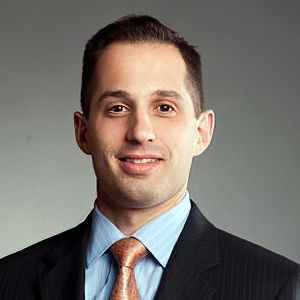 Anthony Fasano, P.E.
Anthony Fasano, P.E.Founder of The Engineering Management Institute
Engineering Management Institute helps engineering professionals become better managers and leaders through learning transfer so that they are equipped to lead the projects that will shape the world moving forward.

ActionsProve and the Engineering Management Institute collaborated on a survey of engineers and architects to understand how these ongoing, tectonic shifts in the nature of work are affecting the industries that hire engineers and architects, and how individuals in these fields imagine their future careers given these shifts. The study will help employers rethink their current approach to talent sourcing and challenge them to build more strategic, agile, growth-oriented and recession-proof talent ecosystems moving forward.
CONTACT US TO LEARN MORE

